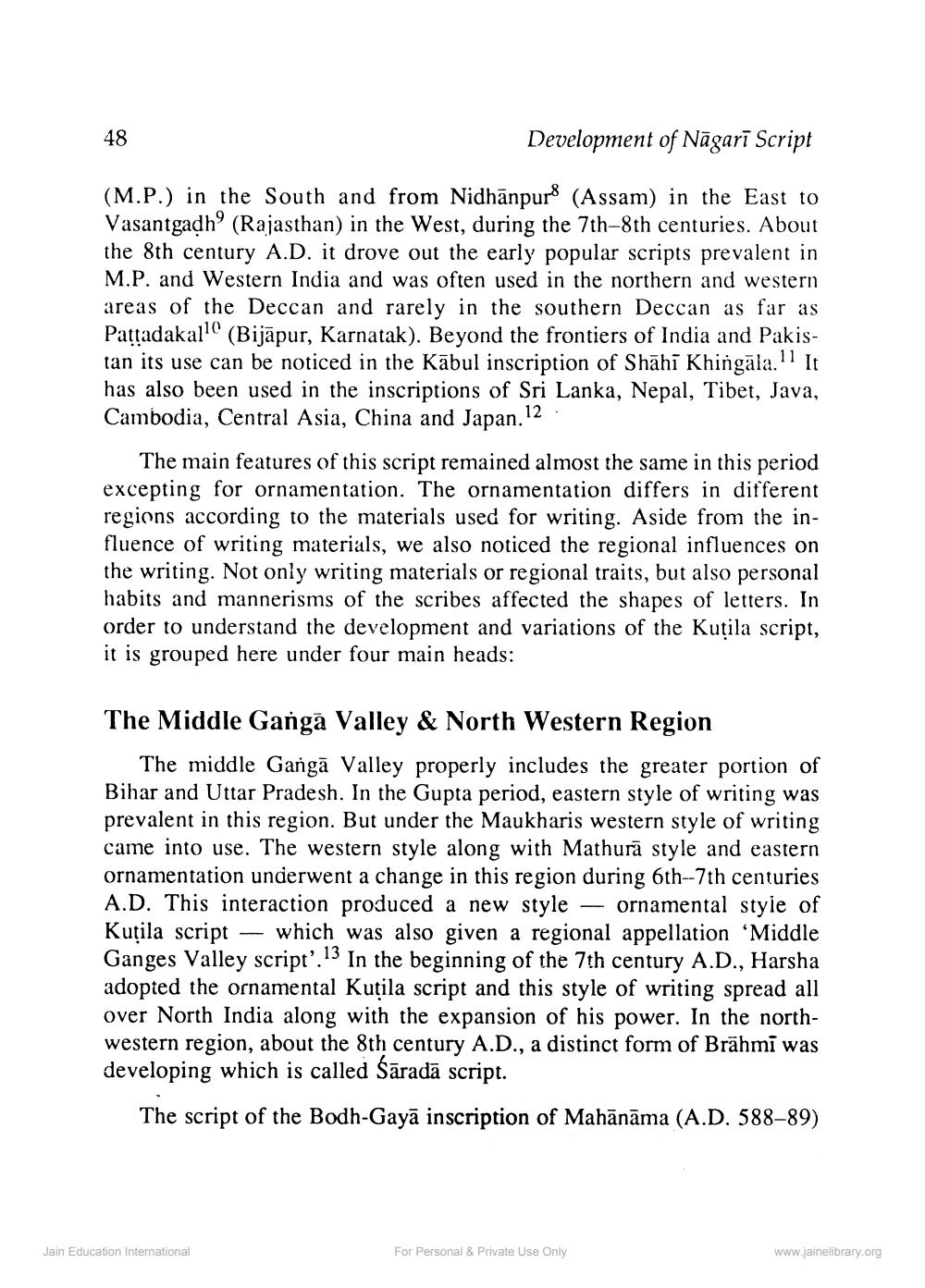________________
Development of Nāgarī Script
(M.P.) in the South and from Nidhānpur (Assam) in the East to Vasantgadh (Rajasthan) in the West, during the 7th-8th centuries. About the 8th century A.D. it drove out the early popular scripts prevalent in M.P. and Western India and was often used in the northern and western areas of the Deccan and rarely in the southern Deccan as far as Pattadakall (Bijapur, Karnatak). Beyond the frontiers of India and Pakistan its use can be noticed in the Kabul inscription of Shahi Khingala.11 It has also been used in the inscriptions of Sri Lanka, Nepal, Tibet, Java, Cambodia, Central Asia, China and Japan.12
11
48
The main features of this script remained almost the same in this period excepting for ornamentation. The ornamentation differs in different regions according to the materials used for writing. Aside from the influence of writing materials, we also noticed the regional influences on the writing. Not only writing materials or regional traits, but also personal habits and mannerisms of the scribes affected the shapes of letters. In order to understand the development and variations of the Kutila script, it is grouped here under four main heads:
The Middle Ganga Valley & North Western Region
The middle Ganga Valley properly includes the greater portion of Bihar and Uttar Pradesh. In the Gupta period, eastern style of writing was prevalent in this region. But under the Maukharis western style of writing came into use. The western style along with Mathura style and eastern ornamentation underwent a change in this region during 6th-7th centuries A.D. This interaction produced a new style ornamental style of Kutila script which was also given a regional appellation 'Middle Ganges Valley script'. 13 In the beginning of the 7th century A.D., Harsha adopted the ornamental Kutila script and this style of writing spread all over North India along with the expansion of his power. In the northwestern region, about the 8th century A.D., a distinct form of Brähmi was developing which is called Sarada script.
The script of the Bodh-Gaya inscription of Mahānāma (A.D. 588-89)
Jain Education International
-
For Personal & Private Use Only
www.jainelibrary.org




